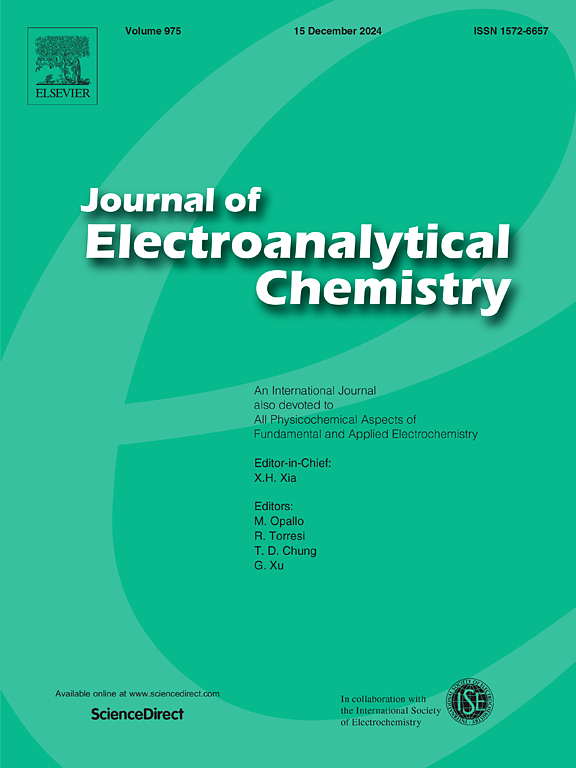Impact of compositional tuning on Ni-B electrocatalyst for efficient hydrogen evolution
IF 4.1
3区 化学
Q1 CHEMISTRY, ANALYTICAL
引用次数: 0
Abstract
Transition metal boride (TMB) materials have gained enormous attention as an interesting class of catalysts. The precise role of the metal-to-boron molar ratio on composite formation and its relation to electrocatalytic activity for HER is still unclear. Herein, the NiB electrode was synthesized by a varying nickel-to-boron molar ratio (1:0.5,1:1,1:1.5,1:2) using a simple and low-cost chemical bath deposition technique. The change in molar ratio influences NiB electrode structural composition, electrocatalytic activity, and the onsite rate of hydrogen production. An insightful compositional variation was interpreted from the XPS study. It reveals that only the NiB3 electrode (Ni-B with molar ratio 1:1.5) exhibited the pure form of NiB in the core and partially oxidized layer on the surface. In the other electrodes, partially oxidized NiB in the core and a completely oxidized layer on the surface were observed. The synergic effect of pure and partially oxidized NiB phase composition enhanced the HER performance. It delivered a low overpotential of 57 mV at 10 mA/cm2 and a low Tafel slope of 80 mV/dec for HER. It also exhibited the highest hydrogen production rate of 1111.4 ml/hr in a prototype water electrolyzer under an alkaline medium ever reported.

求助全文
约1分钟内获得全文
求助全文
来源期刊
CiteScore
7.80
自引率
6.70%
发文量
912
审稿时长
2.4 months
期刊介绍:
The Journal of Electroanalytical Chemistry is the foremost international journal devoted to the interdisciplinary subject of electrochemistry in all its aspects, theoretical as well as applied.
Electrochemistry is a wide ranging area that is in a state of continuous evolution. Rather than compiling a long list of topics covered by the Journal, the editors would like to draw particular attention to the key issues of novelty, topicality and quality. Papers should present new and interesting electrochemical science in a way that is accessible to the reader. The presentation and discussion should be at a level that is consistent with the international status of the Journal. Reports describing the application of well-established techniques to problems that are essentially technical will not be accepted. Similarly, papers that report observations but fail to provide adequate interpretation will be rejected by the Editors. Papers dealing with technical electrochemistry should be submitted to other specialist journals unless the authors can show that their work provides substantially new insights into electrochemical processes.

 求助内容:
求助内容: 应助结果提醒方式:
应助结果提醒方式:


